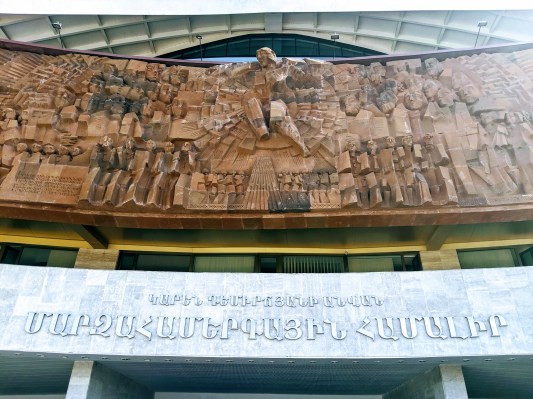It’s a tough world out there for small countries. Technology is the future, everyone knows that; but how do you claim your share of that future when you’re competing with America, China, the EU and India?
How do you build a thriving ecosystem of tech wealth and tech education — successful international businesses whose alumni found and invest in burgeoning startups — when you face the triple threats of a small population, limited capital, and a potential brain drain? Even nations as wealthy and successful as my homeland Canada often struggle with this.
So imagine what it’s like for, say, Armenia, from which I write, a former Soviet republic turned tiny nation of three million, sandwiched between unfriendly neighbors in the Caucasus Mountains. I’m here because the Armenian government is, at obvious expense1, hosting one of the world’s seemingly countless / endless Major Tech Conferences, this time the World Congress of Information Technology. Presumably in the hopes of garnering international attention for — and investment in — Armenia’s tech sector.
This may seem quixotic. Armenia styles itself as “the Silicon Valley of the former Soviet Union,” and its tech sector is successful enough to have played a prominent role in last year’s “velvet revolution.” But it’s still a country of three million in a relatively obscure corner of the world. However, Armenia has a fascinating secret weapon: its diaspora.
Thanks to their homeland’s troubled 20th-century history, many more Armenians live scattered around the world than in Armenia proper, including, most famously, hundreds of thousands in Los Angeles. It is “one of the largest and most sophisticated diasporas in the world.” Obviously there’s cultural drift — but at the same time, I’m repeatedly assured it’s a rare Armenian who doesn’t have a distant friend or relative in LA and/or Moscow.
The effects of this unusually large and loose-knit diasporal web are significant. It leads, sometimes directly, often indirectly, to American clients, German universities and Russian partners; to international connections to venture capitalists and startup incubators; to brain gain as well as drain. It means Armenia isn’t just a landlocked nation of three million, but the beating cultural heart of 10 million, inadvertently strategically scattered across the globe. That’s a far, far stronger position.
I’ve argued before that as technology shortens and tightens the bonds between distributed communities, they’ll grow more significant culturally, financially and, eventually, politically. (And of course tech also makes entire sub-industries even possible; one of WCIT’s sponsors here is a slick and fast-growing crowdfunding marketing company, not exactly a traditional strength of the former Soviet bloc.) The Armenian diaspora is almost a natural experiment testing this theory.
This natural experiment will test whether this secret weapon will help Armenia continue to punch further and further above its weight in technology, tourism and other diaspora-enhanced fields. If that happens, and I expect it to, it will be especially interesting to see which other distributed communities follow in its wake … and whether those will be affiliated with any nation-state at all.
1Including paying the travel costs for your correspondent. Assume unconscious bias accordingly.
